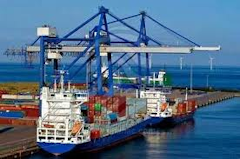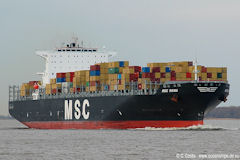
MSC Roma
by James A. Bacon
In Mid-March the MSC Roma paid a stop at the Port of Virginia. Setting a record for a container ship in Virginia waters, the vessel drew 48 1/2 feet when it departed with export-bound containers. Virginia was the only port on the East Coast with channels deep enough to handle the vessel loaded that heavily.
There are a lot more vessels the size of Roma, says Joe Harris, media relations manager for the ports. “They’re all over the water — they’re just not coming to the East Coast yet.” But they will, he says, and Virginia will see them even before the Panama Canal opens its third, wider canal lock in 2014.
The Virginia Port Authority, railroads, shipping companies, logistics companies and even the state of Virginia are preparing for the boom in East Coast container traffic that will flow from the shift in the shipping industry to ever bigger vessels. The question logically arises, will the Hampton Roads transportation network be able to handle the surge, or will roads and railroads become a bottleneck that constrains growth?
Here at the Bacon’s Rebellion command bunker, we have been investigating the impact of the big-ship revolution on Virginia’s economy from a public policy perspective. How can Virginia business and government maximize the benefits of the big ships? And what public investments make sense? In particular, does the commitment of $500 million in public funds to the U.S. 460 Connector, which would provide a second Interstate-quality highway link between the ports and Interstates 95 and 85, make economic sense?
A spirited debate has taken place in previous blog posts, and Rebellion contributor Peter Galuszka posed a very good question in “Closely Watched Trains.” Norfolk Southern and CSX are investing hundreds of millions of dollars upgrading their rail systems to handle double-stacked trains out of Hampton Roads, he noted. Doesn’t that make the $1.8 billion road project unnecessary?
In answer to that question, here’s what I found: Railroads are most competitive for cargo being shipped 500 miles or more. Norfolk Southern and CSX totally dominate the movement of goods to the Midwest and other points far to the west. But trucks are more competitive for shorter hauls. While the railroads can accommodate some of the growth in container shipments, they cannot handle it all.
The ports move 1.1 million containers yearly. Rail moves about 30% of that traffic, barges 4% and trucks the balance, or about two-thirds. Harris is optimistic that railroads will grab a rising share of a growing market. Norfolk Southern and its public-sector partners have invested $320 million upgrading its Heartland Corridor route to handle double-stacked trains, effectively doubling its capacity to serve Midwest markets from Norfolk. As part of the National Gateway Freight Project, CSX Corp. is spending $165 million on a single improvement, the Virginia Avenue Tunnel in Washington, D.C., to create a double-stacking corridor to Ohio.
Harris is reluctant to forecast container traffic through the Virginia ports because the volume is so dependent upon general economic conditions over which the port has no control. Will the American public start consuming again, he asks. Will retailers continue to boost imports from the Far East? Early in the past decade, the ports showed growth rates of 8% to 9% annually. After taking a big hit during the 2007-2008 recession, the ports now are forecasting a more modest 3% yearly volume growth. That may be conservative. Ship lines and shipping alliances are testing Virginia to see how well the ports handle their big vessels.
Long-term, Harris expects the railroads to increase their inter-modal share to 40% of container traffic, an increase of 10 percentage points. That’s all the more remarkable when you consider that the Virginia ports already move a higher percentage of its containers by rail than any other East Coast port. Rail accounts for only 18% in New York and Savannah.
A rule of thumb is that rail captures the container business to markets more than 500 miles away, while the economics favor trucks for shorter distances, says Quintin Kendall, regional vice president for CSX. That means trucks will predominate in shipments to Mid-Atlantic markets, competing with Baltimore and Philadelphia in the north and Wilmington and Charleston to the south. That business will be highly competitive. As Kendall puts it, Virginia is a “discretionary market” port.
What does this all mean for our analysis of Virginia’s $500 million commitment to the U.S. 460 Connector?
- Railroads are poised to capture a growing share of the inter-model market for Virginia’s ports, from 30% currently to 40% in the indefinite future.
- Railroads are less competitive serving markets less than 500 miles away, where truck traffic will predominate.
- If container traffic increases 3% annually over the next decade, railroads will be able to handle only that portion destined for distant markets. (Barges are a negligible factor.)
- Truck traffic will increase. The rate of increase may depend upon the degree of congestion on Virginia bridges, tunnels and highways and the ability of competing ports to improve their infrastructure.
Thus, to answer Peter’s query, yes, railroads can handle some of the increase in container shipments over the next decade but only a fraction of it. For Virginia to reach its full economic potential, the commonwealth needs to increase its highway capacity serving Hampton Roads. Failing to increase that capacity could mean foregoing some economic growth, though how much is hard to say.
That still leaves open the question of whether the U.S. 460 Connector is economically justified: $1.8 billion, including $500 million in public dollars, is an immense sum. That money could be invested elsewhere or left in the hands of taxpayers. Alternative investments would have economic benefits of their own. Perhaps the most objective way to address this issue is this: Does the U.S. 460 Connector create enough economic value to support the toll structure required to finance its construction? If so, state government should find a way to make it happen. If not, perhaps the economic justification does not exist.
We’ll dig deeper in a follow-up article.


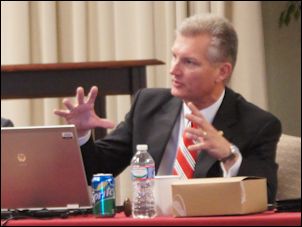
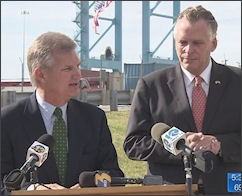
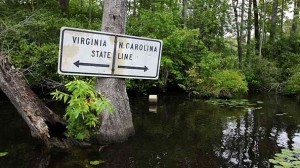


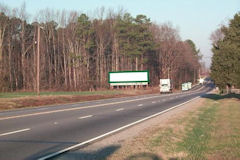
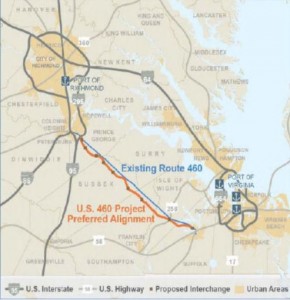
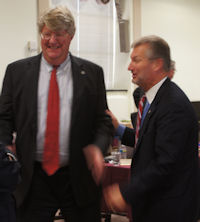

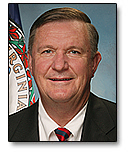
 by James A. Bacon
by James A. Bacon